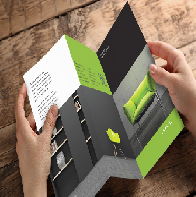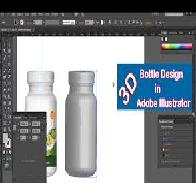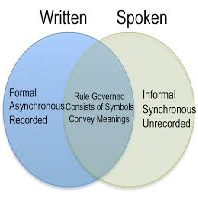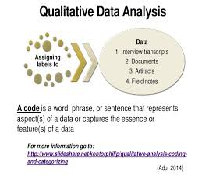Create A Brochure using Adobe program In Design Create A Brochure using Adobe program In Design
Product: An interpretive brochure for a self-guided walk, hike, biking, equestrian, or auto tour.

Options:
1. Brochure Redesign. Find an example of a poorly developed brochure (poor in both interpretive & conceptual design techniques). Redesign that brochure using better interpretive & conceptual design techniques.
Create A Brochure using Adobe program In Design Submission Requirements
i. Submit (a) an image of the original brochure pasted into a word document (scan
a paper copy if needed, save it as an .jpg, then insert into word document) that
also has (b) the theme you developed to plan the redesign.
ii. Submit a pdf file of your redesigned brochure.
2. New Brochure. Identify a location that is need of a self-guided tour. Design a brochure for use in this location using interpretive and conceptual design techniques.
a. Submission Requirements:
i. Submit (a) a description of why you thought there was a need for an interpretive
tour in that location that also has (b) the theme you developed to design the
brochure.
ii. Submit a pdf file of your brochure.
Content: The subject matter of your brochure must be an environmental or cultural resource (wide latitude for this project; e.g., a tour of the best front porches in Raleigh). The subject can be the same as that of your podcast.
Software: Adobe In-Design, Illustrator & Photoshop
Preparation Work:
1. Write the theme (i.e., the “so what” you want your audience to
walk away with after participating in your self-guided tour) and write your title (Level I; can be your theme if very short but needs to be a thematic title).
2. Identify your stops (include “intro” and “concluding” stops). Develop 4 or fewer main ideas.
3. Write your Level II titles (better if they are thematic subtitles) and write the Level III text for each stop.
Create A Brochure using Adobe program In Design Grading Rubric: Total Points
Theme statement Organized Relevant Enjoyable Attractive
Brief Clear
100
10
15
15
15
15
15
15
4. Write your concluding stop Level II title & Level III text.
5. Write your introductory stop Level II title & Level III text.
6. Create a map.
7. Find, save & download relevant pictures & images (e.g., pictures, diagrams, maps) for your
brochure that pertains to your theme and main idea(s). Write captions (Level IV).
8. Add relevant logos and “for more information” text.
Brochure Development Requirements:
Use Adobe InDesign to create your brochure & Illustrator to develop graphics for your brochure. Set-up your file to be a three-fold, two-sided brochure on letter-sized paper. Your brochure must include a map (if one is not available or it is of poor quality, maps can be made from Google Maps and edited in Photoshop or Illustrator, or can be made using ArcView GIS). Your brochure should include: Title, Theme, Map, Introduction, Description of each stop (main idea/connection to theme), Photos/Illustrations, & a Credit to your work (consider adding NCSU & PRTM logos). Remember to use interpretive principles & strategies, including those relating to conceptual & artistic design. Create A Brochure using Adobe program In Design The brochures must be in black & white or grayscale. Be sure to save all images to your InDesign Project Folder to ensure proper packaging. Save as a pdf (“Export”, “Format” “Adobe PDF (Print)”) to submit via Moodle.












